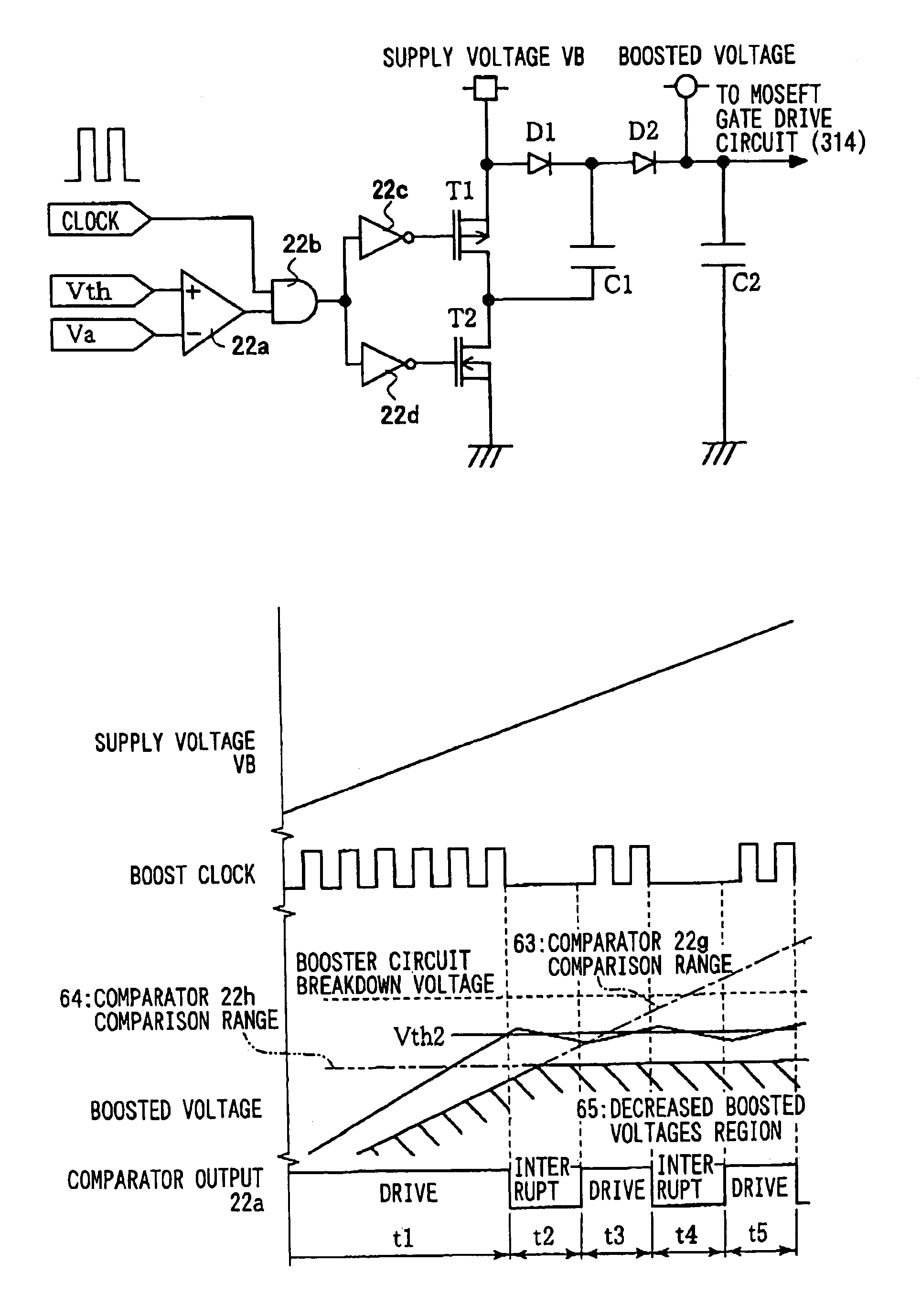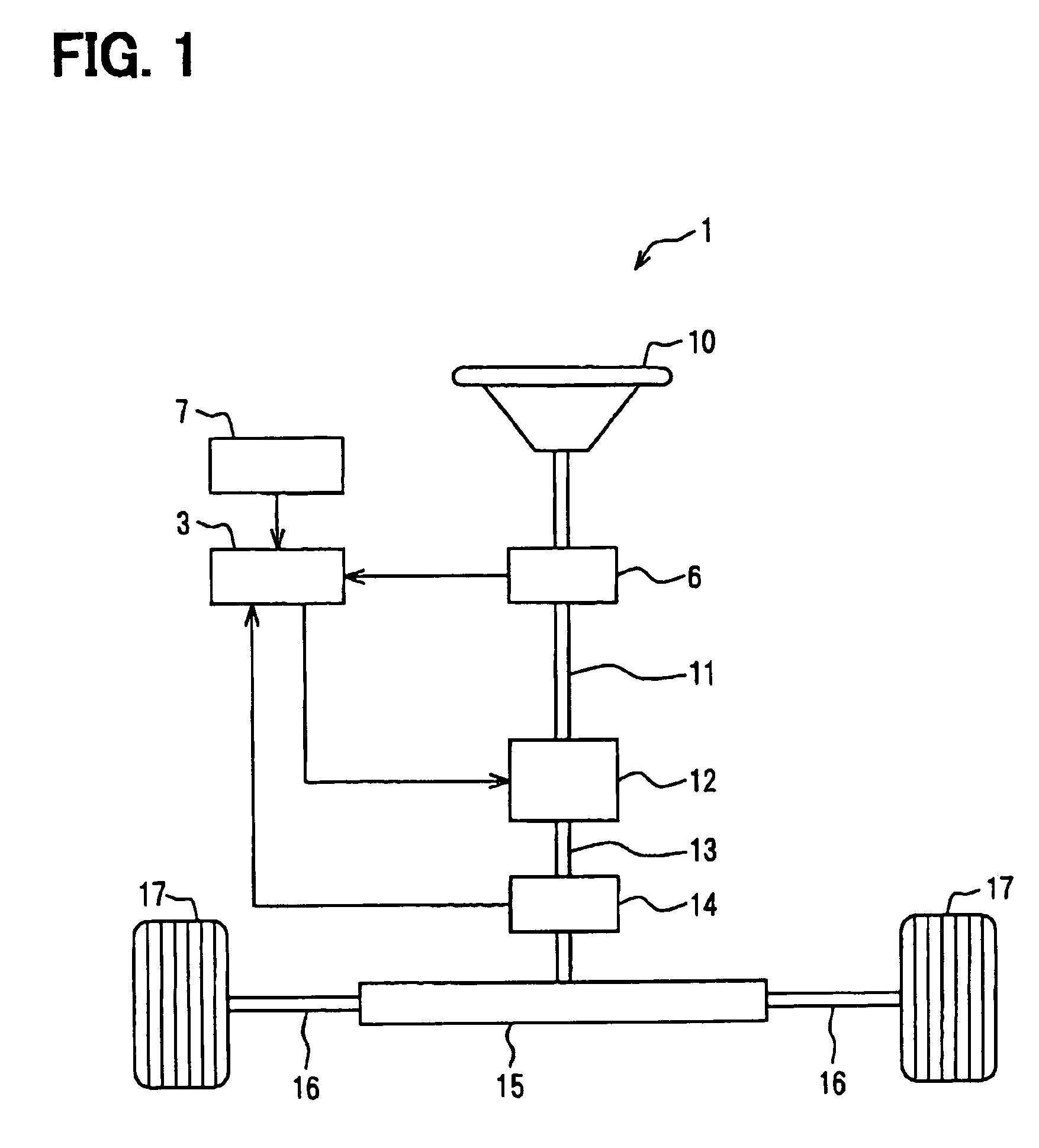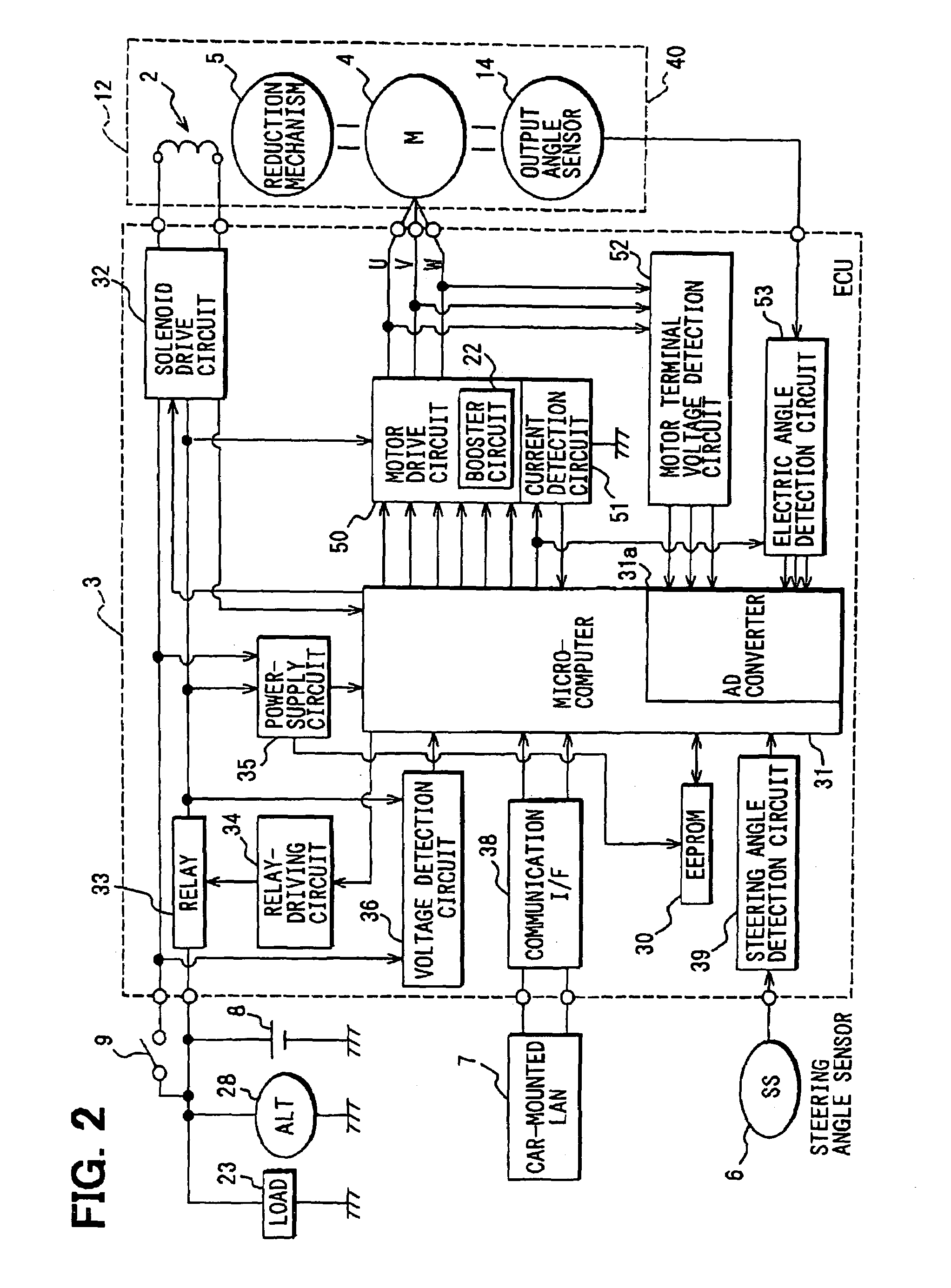Electronic control unit, electric power-assisted steering device and transmission ratio-variable steering unit
a technology of electric power-assisted steering and control unit, which is applied in the direction of motor/generator/converter stopper, dynamo-electric converter control, instruments, etc., can solve the problems of abrupt decrease of steer-assist force, circuit to be broken down, and no voltage for driving to the switching elements of the inverter, etc., to reduce the unit price, suppress the cost of production, and prevent the effect of circuit or parts from being broken
- Summary
- Abstract
- Description
- Claims
- Application Information
AI Technical Summary
Benefits of technology
Problems solved by technology
Method used
Image
Examples
embodiment 1
(Embodiment 1 of the Invention)
[0060]A first embodiment of controlling the booster circuit 22 (booster means of the invention) by the method of the invention will be described with reference to FIGS. 4, 5A and 5B. FIG. 4 is a flowchart illustrating the flow of control operation, and FIGS. 5A–5B are diagrams illustrating the booster circuit and a timing chart of when the booster circuit operates. The diagram of FIG. 5B is a partial modification from the circuit diagram of FIG. 9B, and is, hence, illustrated by using the same reference numerals. Further, the constitution same as that of the prior art is not described here again.
[0061]In FIG. 5A, the comparator 22a (voltage monitoring means of the invention) is a known operational amplifier to which a resistor and a capacitor that are not shown are connected to compare the voltages. To one input terminal of the comparator 22a, there is input a voltage Va (see FIG. 12A) divided from the boosted voltage and to the other input terminal th...
embodiment 2
(Embodiment 2 of the Invention)
[0069]A second embodiment of controlling the booster circuit 22 (booster means of the invention) by the method of the invention will be described with reference to FIG. 6. FIG. 6 is a partial modification from the circuit diagram of FIG. 5, and is, hence, illustrated by using the same reference numerals. The portions overlapping those of the embodiment 1 of the invention are not described here again.
[0070]In FIG. 6, the comparator 22e (voltage monitoring means of the invention) is a known operational amplifier to which a resistor and a capacitor that are not shown are connected to compare the voltages. To one input terminal of the comparator 22e, there is input a voltage Va (see FIG. 12A) divided from the boosted voltage and to the other input terminal thereof, there is input a threshold value Vth for monitoring a high voltage of the boosted voltage. The threshold value Vth may be formed in the boosting circuit 22 based on the supply voltage VB of the ...
embodiment 3
(Embodiment 3 of the Invention)
[0078]A third embodiment of controlling the booster circuit 22 (booster means of the invention) by the method of the invention will be described with reference to FIG. 7. FIG. 7 is a partial modification from the circuit diagram of FIGS. 5A–5B, and is, hence, illustrated by using the same reference numerals. The portions overlapping those of the embodiment 1 of the invention are not described here again.
[0079]In FIG. 7, the comparator 22f (voltage monitoring means of the invention) is a known operational amplifier to which a resistor and a capacitor that are not shown are connected to compare the voltages. To one input terminal of the comparator 22f, there is input a voltage Va (see FIG. 12A) divided from the boosted voltage and to the other input terminal thereof, there is input a threshold value Vth for monitoring a high voltage of the boosted voltage. The threshold value Vth may be formed in the booster circuit 22 based on the supply voltage VB of t...
PUM
 Login to View More
Login to View More Abstract
Description
Claims
Application Information
 Login to View More
Login to View More - R&D
- Intellectual Property
- Life Sciences
- Materials
- Tech Scout
- Unparalleled Data Quality
- Higher Quality Content
- 60% Fewer Hallucinations
Browse by: Latest US Patents, China's latest patents, Technical Efficacy Thesaurus, Application Domain, Technology Topic, Popular Technical Reports.
© 2025 PatSnap. All rights reserved.Legal|Privacy policy|Modern Slavery Act Transparency Statement|Sitemap|About US| Contact US: help@patsnap.com



